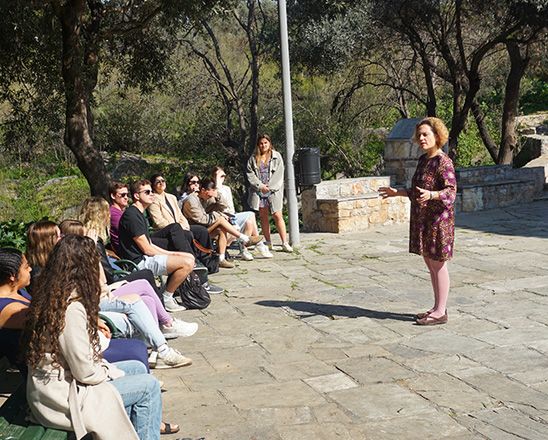
Sacred Flesh: Body, Salvation, and Sainthood in Antiquity: A Comparative Approach

How was the physical body traditionally viewed and used in ancient Greek and Roman religion? How did the advent of Christianity change prevailing notions of the body? How can the body lead to salvation, a wonderful afterlife and possibly even sainthood? Under which circumstances is the body a hindrance to salvation? What if one aimed at perfection? How were ordinary early Christians advised to use the material body they carried? And the bodies and bodily remains of their holy figures? And their deceased loved ones?
Embodied religion has recently attracted the attention of both social history and theology along with the realisation that religious contents are dependent upon the material existence of human bodies. The body is recognized all the more as socially and culturally constructed. This course is for those interested in investigating how religion relates to bodies and sexualities and how bodies are ascribed religious meanings.
This course will mainly focus on ancient paganism and the early Christian Church (from the 7th cent BC until the 4th cent CE). Special emphasis will be given on eastern Christian monasticism. A comparison with other monotheistic religions, i.e. Judaism and Islam, will be ventured towards the end of the semester.
Course Aims
This course aims to try to reconstruct the social meanings attached to the body in ancient Greek and Roman religion. Students will be invited to discuss the transition from polytheism to monotheism by mainly focusing on changing notions on the body and exploring how monotheism introduced the body and mind dichotomy in the ancient Mediterranean world. We will examine how ancient Greeks and Romans and a bit later early Christians assigned, read and projected moral meanings onto the body, and how these meanings got expounded in ethical expression as rules, norms and practices. Which were the boundaries paganism and early Christianity drew between what they considered to be appropriate and inappropriate use of the body? All of these topics will be approached through primarily textual sources, archaeological finds and ancient art, supplemented by secondary scholarship.
Course Outcomes
Students will:
• gain a deeper understanding of studying religion as a human phenomenon,
• understand the connections between religion and the body,
• appreciate critically the influence of religious viewing of the body in shaping human experience,
• critically engage the various ways in which religion deeply intersect with human bodies and sexualities,
• engage with opposing views on a level that moves beyond superficial differences to differences of values and methodologies, and
• become familiar with major landmarks in the history of eastern Christian monasticism.



